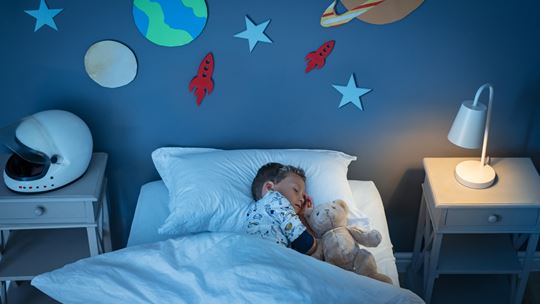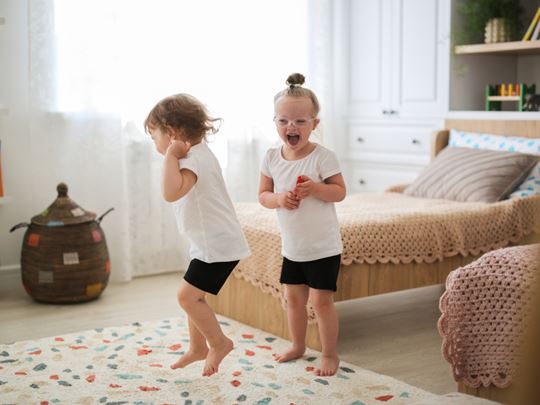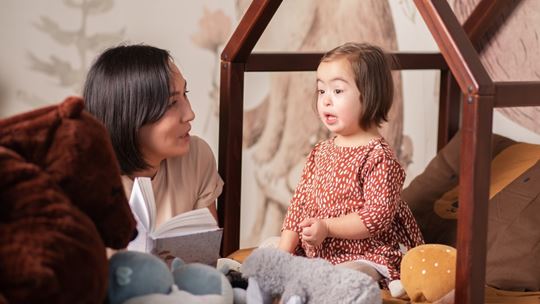Fostering any child makes for a rewarding and loving life choice, but fostering a child with a disability or special needs can make the experience extra special – for you and the child in your care.
If you are open to fostering a child with additional needs, it’s important to ensure their bedroom is designed with their needs in mind.
Your fostering agency can advise on preparing a bedroom for children with disabilities, fostering allowances and any support available from the local authority to help pay for any additions you need to make to the bedroom. This way, you can feel confident and happy that you’re making the best choices for the child in your care.

Awesome Bedroom Ideas for Foster Children With Complex Needs
How to Create a Sensory-Friendly Bedroom
If you foster a child with autism, then creating a sensory bedroom can offer the child a special place that’s tailored to their preferences and needs.
Autism sensory bedrooms can be designed to help their brains process information easier, and help avoid sensory overload. They also provide calmness and comfort to children with sensory processing disorder or other sensory processing problems.
While every child is different and unique, there are some basic ways you can make their bedroom a sensory-friendly space free from overload.
Here are a few calming sensory room ideas for children with learning difficulties, anxiety, childhood trauma, ADHD or autism:
Opt for calming colours
Colour has a strong impact on the mind, with certain colours having the ability to reduce blood pressure and soothe emotions. When thinking about autism bedroom ideas, you also need to consider how the colour of the room will appear during the day and at night.
Neutral tones and pastel shades are among the least stimulating and can provide a tranquil and relaxing feeling. Darker shades of cool colours (such as blues, greens, purples, and earth tones) are calming with the darker shade options absorbing natural light and creating less visual stimulation.
Lighting
Lighting accents such as fibre optics and bubble tubes can enhance the soothing nature of the room. A motion-activated nightlight is a useful tool for when your child needs to get up during the night, without having to turn the lights on.
Lava lamps and LED colour lights in shapes such as cubes or balls can create a peaceful transition to bedtime, helping to create a relaxing sensory experience to unwind after a busy day.
You might also like to consider blackout curtains or blinds to block external light.

Comfortable bedding
Bedding should be made from fabrics and textures that appeals to the child in your care. They should be soft and snuggly with designs that are fun but not overly stimulating.
Soft play spaces
If you’ve got the space, then why not set up a soft area in the room for your child to play in? Hanging swings can be a soothing option, otherwise, a rug, floor cushion, beanbag, or small rocking chair can provide comfort and fun as they unwind.
Soothing music
While some children with autism spectrum disorder (ASD) enjoy listening to repetitive sounds, others prefer soft music. Understand what is best for your child and pop a Toniebox, Alexa, or a white noise machine in their room. You could also give them some noise-reducing headphones if they don’t like loud noises and the white noise machine can help drown out external sounds.
Reduce clutter
Less is more when it comes to autism bedroom ideas. Too much visual stimulation can trigger anxiety, so opt to keep their bedroom simple. Have areas to keep things organised, such as a cupboard, labelled stackable drawers, baskets, or bins, and keep clutter clear at bedtime to avoid distraction and overstimulation.
Remember, when it comes to autism sensory bedrooms, the focus should be on creating a calm and relaxing space where they can decompress. A well-designed room should be functional, meet their sensory needs, provide reassurance, and promote independence. But, above all, it’s a child’s bedroom, and it needs to reflect that.
Bedroom ideas for children with special needs or disabilities
When thinking about kid’s bedroom design for a child with special needs, you might need to consider things such as if you’ll need a special needs bed, how much room they’ll need, and if they’ll need lifting equipment or space for medical machines.
If you’re becoming a foster parent to a child with a physical disability, accessibility and comfort should be the main priorities.
Bedroom design for children with special needs does require some additional care and consideration to make the room functional, but you also need to design it with the child in mind. Children in care have the same rights as other kids regarding self-expression, pride, and personality in their bedroom, so getting to know their likes and dislikes is a great way of creating a bedroom that they’ll love and be able to use.
Here are a few suggestions to help with your decorating:
- Keep things in easy reach – Make sure that shelves, light switches, wardrobe handles, hooks, etc are within easy reach for your child.
- Ensure there’s space – If the child in your care requires a wheelchair, walking frame, or other walking aid, maneuvering space will be needed. You might need to rearrange the room or take out unnecessary items to make space.
- Use motion sensors and lamps – If the child in your care can’t reach the standard light switch, then placing lamps around the room within easy reach is a great alternative. You can also add motion sensors so they don’t have to worry about turning on the light when they get out of bed during the night.
- Space around the bed – Whether the child in your care requires specialist equipment such as lifting equipment or vital machines, you need to ensure there is ample space to store them around the bed.
- Easy to open doors and drawers – If the child in your care has mobility issues, consider installing drawers and cupboards with easy-to-open access points or door levers.
- Accessible furniture – Check to make sure any desks or tables are high and deep enough to accommodate a wheelchair if one is needed by the child in your care.
- Clear pathways – Try to create a clear pathway to the bathroom from the bedroom.
- Special needs bed – Specialist equipment such as a special needs or hospital bed will be provided by the local authority if needed.
Always remember, this is their bedroom and not a hospital room, so decorate it and fill it with the same toys and books just as you would an able-bodied child.
Could you foster a child with special needs or disabilities?
Fostering a child with health needs, whether it’s physical or learning difficulty, requires patience, understanding, a willingness to learn, and above all, love. You will learn so much and reap the rewards of giving a child with special needs a safe, loving, and secure home.
While fostering a child with a special need or disability might seem challenging, you will never be alone. You will always be supported by a wrap-around team of specialists, and receive extensive training, advice, and support. Giving you everything you need to help the child in your care flourish.







